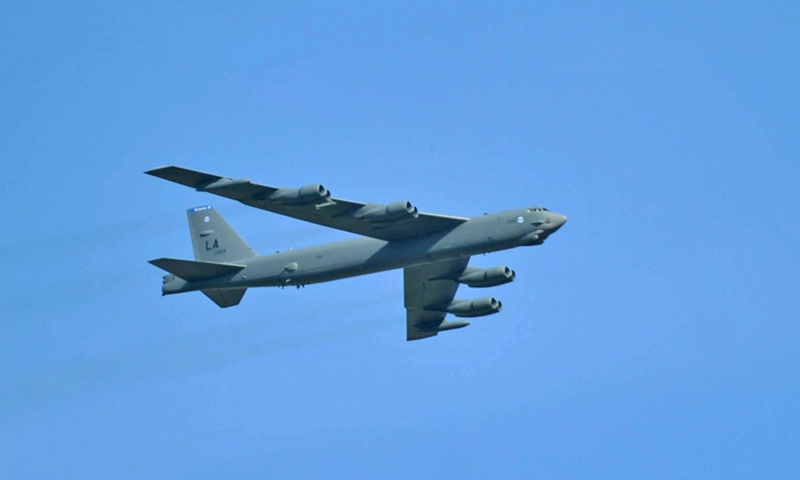The Russian embassy in the U.S. criticized the deployment of B-52H Stratofortress nuclear-capable strategic bombers in the course of large-scale U.S.-NATO war games in the Baltic Sea, the fiftieth version of Baltic Operations (BALTOPS).
The Russian embassy communicated its concern via Twitter (such is our age) in these words:
“Use of [a] US Air Force nuclear-capable B-52H during BALTOPS is another provocation. Such sabre-rattling escalates the situation in Europe and deteriorates the atmosphere before the Russian-US summit. We urge the US to review its approach to European security and stop dangerous activities near the Russian border.”
A B-52 in the Baltic Sea region, like the squadrons of advanced multirole combat aircraft NATO flies out of the Šiauliai Air Base in Lithuania and the Ämari Air Base in Estonia, is within immediate striking distance of major targets in Russia and Belarus. For example, the Lithuanian capital of Vilnius is only 115 miles from the Belarusian capital of Minsk and 250 miles from Russia’s St. Petersburg. An F-15E Strike Eagle can fly up to 3,000 miles an hour, so taking off from one of NATO’s Baltic bases it could reach Russia’s second largest city in five minutes. A B-52 bomber flies at the speed of 650 miles an hour, so could reach that city from the Baltic region in 23 minutes. The equivalent of the latter would be a Russian Tupolev Tu-95 nuclear bomber engaging in a 23-mile flight from Washington, D.C. or New York City. The B-1 can fly up to 900 miles per hour, so with it the time for the B-52 can be cut by almost a third.

On May 31, America’s Memorial Day, B-52 bombers, escorted by NATO warplanes, flew over all thirty NATO member states in a threatening gesture only paralleled by a similar series of flights in August of last year. The plane, for decades a premier nuclear bomber in the Pentagon’s arsenal, also recently flew over Africa’s Gulf of Guinea and by a U.S. Air Force account all of Western Africa.
With ongoing Bomber Task Force deployments, so far this year the U.S. has flown B-52s and the other two Cold War-era American nuclear-capable bombers, the B-1 Lancer and B-2 Spirit stealth bomber, extensively over Europe, including flying four B-1s to Norway in February, one of which for the first time landed at a base in the nation’s Arctic region. In March B-2s flew sorties in the Arctic Circle with Norwegian F-35s. Last month a B-52 engaged in a test of a new hypersonic missile (Mach 8 speed) during the Northern Edge 21 exercise off the shores of Alaska.
The three U.S. strategic bombers have become regular fixtures in Europe, particularly near Russia’s western border, what the West refers to as NATO’s Eastern Flank, one that has moved several hundred miles east since 1999. Russian aircraft have intercepted B-52s over the Baltic Sea several times in recent years, most recently last month (only hours before the first meeting between Russian Foreign Minister Sergei Lavrov and U.S. Secretary of State Antony Blinken in Reykjavik, Iceland).
Russia’s complaint of today, though, is predicated on more serious concerns: that the nuclear-capable bomber was presumably participating in major war games off Russia’s Baltic coast.
Rick Rozoff is a contributing editor at Antiwar.com. He has been involved in anti-war and anti-interventionist work in various capacities for forty years. He lives in Chicago, Illinois. He is the manager of Stop NATO. This originally appeared at Anti-Bellum.


